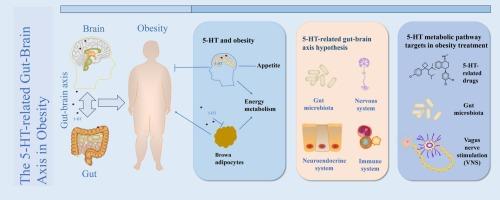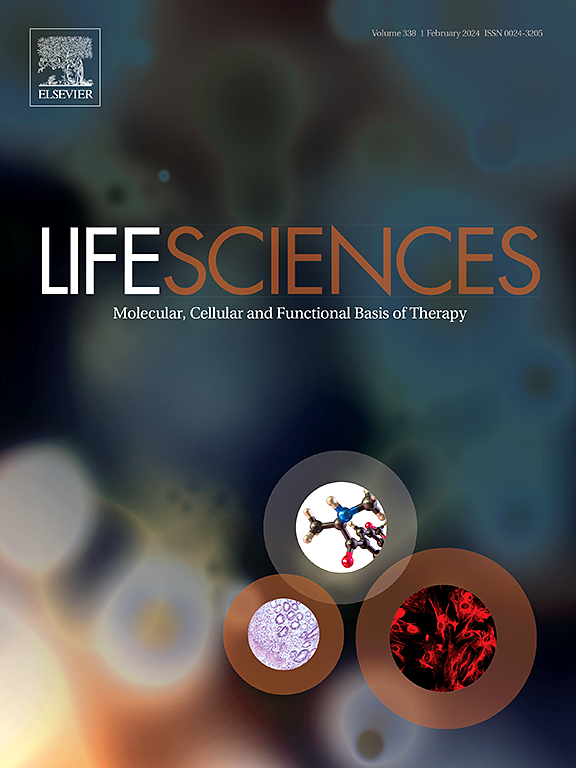The 5-HT-related gut-brain axis in obesity
IF 5.2
2区 医学
Q1 MEDICINE, RESEARCH & EXPERIMENTAL
引用次数: 0
Abstract
Aims
The incidence of obesity increases annually. It is closely related to the occurrence of cardiovascular diseases, malignant tumors, etc., and has become a major global health problem. 5-hydroxytryptamine (5-HT), a multifunctional monoamine neurotransmitter, is dispersed throughout the central nervous system and digestive tract. It is intimately related to the mechanism of obesity.
Materials and methods
PubMed, Web of Science and Embase were carefully searched. We collected articles that are closely related to 5-HT, the gut-brain axis, and obesity.
Key fingdings
The gut microbiota not only influences nutrient metabolism but also centrally meditates appetite and mood regulation. The gut-brain axis, a system connecting the gut and the brain, is known to participate in two-way communication between the gut flora and the central nervous system.
Significance
There have been few reports on whether peripheral and central 5-HT interact bidirectionally via the gut-brain axis and jointly play a role in the pathogenesis of obesity. In this review, we summarize the rationale for the contribution of the 5-HT-related gut-brain axis to the development of obesity and explore feasible signaling pathways, which elucidates new targets for preventing and treating obesity.

肥胖症中与 5-HT 相关的肠脑轴。
目的:肥胖症的发病率逐年上升。它与心血管疾病、恶性肿瘤等的发生密切相关,已成为全球性的重大健康问题。5-羟色胺(5-HT)是一种多功能单胺类神经递质,分布于中枢神经系统和消化道。它与肥胖的机理密切相关:仔细检索了 PubMed、Web of Science 和 Embase。我们收集了与 5-羟色胺、肠道-大脑轴和肥胖密切相关的文章:肠道微生物群不仅影响营养代谢,还在中枢上调节食欲和情绪。肠脑轴是连接肠道和大脑的系统,已知它参与了肠道菌群和中枢神经系统之间的双向交流:关于外周和中枢 5-HT 是否通过肠脑轴进行双向交流,并在肥胖的发病机制中共同发挥作用,目前还鲜有报道。在这篇综述中,我们总结了与 5-HT 相关的肠-脑轴对肥胖症发病的作用原理,并探讨了可行的信号传导途径,从而阐明了预防和治疗肥胖症的新靶点。
本文章由计算机程序翻译,如有差异,请以英文原文为准。
求助全文
约1分钟内获得全文
求助全文
来源期刊

Life sciences
医学-药学
CiteScore
12.20
自引率
1.60%
发文量
841
审稿时长
6 months
期刊介绍:
Life Sciences is an international journal publishing articles that emphasize the molecular, cellular, and functional basis of therapy. The journal emphasizes the understanding of mechanism that is relevant to all aspects of human disease and translation to patients. All articles are rigorously reviewed.
The Journal favors publication of full-length papers where modern scientific technologies are used to explain molecular, cellular and physiological mechanisms. Articles that merely report observations are rarely accepted. Recommendations from the Declaration of Helsinki or NIH guidelines for care and use of laboratory animals must be adhered to. Articles should be written at a level accessible to readers who are non-specialists in the topic of the article themselves, but who are interested in the research. The Journal welcomes reviews on topics of wide interest to investigators in the life sciences. We particularly encourage submission of brief, focused reviews containing high-quality artwork and require the use of mechanistic summary diagrams.
 求助内容:
求助内容: 应助结果提醒方式:
应助结果提醒方式:


